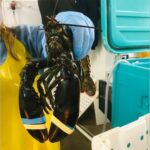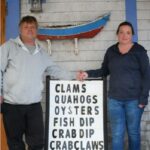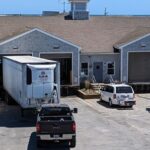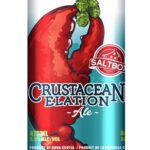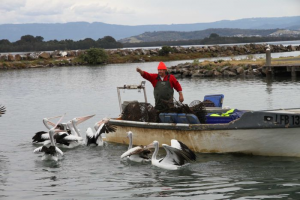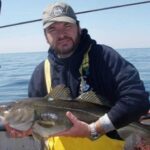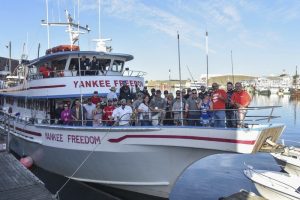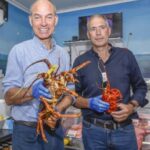Tag Archives: Alaska Fisheries Science Center
Task force report identifies research needs to better understand Alaska salmon problems
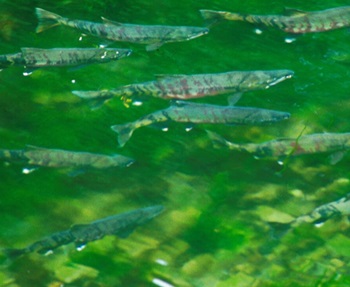 Fishery managers overseeing Alaska’s faltering salmon runs should be able to rely on a more comprehensive and holistic approach to science that considers all habitat, from the middle of the ocean to freshwater spawning streams far inland, according to a task force report on salmon research needs. The report was issued last week by the Alaska Salmon Research Task Force, a group established through a 2022 act of Congress to identify knowledge gaps and research needs. The task force comprises close to 20 members and includes scientists, fishers, Indigenous community representatives and agency managers. In addition to those members, the effort included a special 42-member working group focused on salmon problems in the Yukon and Kuskokwim River drainages. The report follows a year’s worth of meetings and consultations. more, >>CLICK TO READ<< 17:34
Fishery managers overseeing Alaska’s faltering salmon runs should be able to rely on a more comprehensive and holistic approach to science that considers all habitat, from the middle of the ocean to freshwater spawning streams far inland, according to a task force report on salmon research needs. The report was issued last week by the Alaska Salmon Research Task Force, a group established through a 2022 act of Congress to identify knowledge gaps and research needs. The task force comprises close to 20 members and includes scientists, fishers, Indigenous community representatives and agency managers. In addition to those members, the effort included a special 42-member working group focused on salmon problems in the Yukon and Kuskokwim River drainages. The report follows a year’s worth of meetings and consultations. more, >>CLICK TO READ<< 17:34
NOAA postpones controversial bottom trawling experiment in Alaska’s Northern Bering Sea
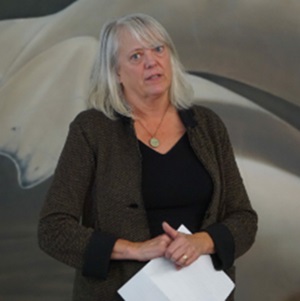 The project, called the Northern Bering Sea Effects of Trawling Study, or NETS, has been envisioned as an experiment to examine impacts of commercial bottom trawling in an area of the Bering Sea where it is currently banned. Bottom trawling is a method of fish harvesting that uses nets to sweep the seafloor. While it is prohibited in the Northern Bering Sea, the shift in fish populations caused by climate change may build pressure for bottom trawling there in the future, according to the study plan. The study has been designed as a multiyear project to start as early as this August. It was to be conducted by the Alaska Fisheries Science Center, a branch of the National Oceanic and Atmospheric Administration’s Fisheries Service, also known as the National Marine Fisheries Service. News of the decision came in an emailed letter from Janet Coit, director of NOAA Fisheries, to tribal organizations that had expressed opposition to the project. more, >>click to read<< 09:52
The project, called the Northern Bering Sea Effects of Trawling Study, or NETS, has been envisioned as an experiment to examine impacts of commercial bottom trawling in an area of the Bering Sea where it is currently banned. Bottom trawling is a method of fish harvesting that uses nets to sweep the seafloor. While it is prohibited in the Northern Bering Sea, the shift in fish populations caused by climate change may build pressure for bottom trawling there in the future, according to the study plan. The study has been designed as a multiyear project to start as early as this August. It was to be conducted by the Alaska Fisheries Science Center, a branch of the National Oceanic and Atmospheric Administration’s Fisheries Service, also known as the National Marine Fisheries Service. News of the decision came in an emailed letter from Janet Coit, director of NOAA Fisheries, to tribal organizations that had expressed opposition to the project. more, >>click to read<< 09:52
NOAA Fisheries releases more information about ‘high level’ of killer whales caught this year by Alaska trawl fleet
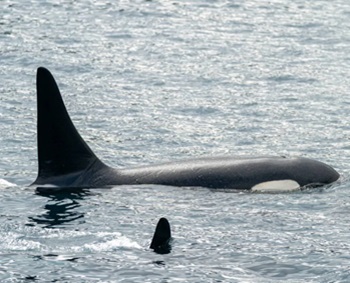 Six killer whales caught in trawl net gear this year in waters off Alaska died as a result of their entanglement, while a seventh whale was seriously injured by this gear, according to a NOAA Fisheries statement released Friday. The trawl fishing industry’s 2023 take of killer whales, first made by public NOAA Fisheries in September, is significantly higher than in recent years past, according to a review of NOAA Fisheries death tolls through 2021. Bering Sea killer whales are not listed under the Endangered Species Act but are protected under the Marine Mammal Protection Act. John Gauvin, fisheries science director for the Alaska Seafood Cooperative, “We want to conduct our fisheries without harming orcas and we’re taking steps to avoid future mortalities,” more, >>click to read<< 10:19
Six killer whales caught in trawl net gear this year in waters off Alaska died as a result of their entanglement, while a seventh whale was seriously injured by this gear, according to a NOAA Fisheries statement released Friday. The trawl fishing industry’s 2023 take of killer whales, first made by public NOAA Fisheries in September, is significantly higher than in recent years past, according to a review of NOAA Fisheries death tolls through 2021. Bering Sea killer whales are not listed under the Endangered Species Act but are protected under the Marine Mammal Protection Act. John Gauvin, fisheries science director for the Alaska Seafood Cooperative, “We want to conduct our fisheries without harming orcas and we’re taking steps to avoid future mortalities,” more, >>click to read<< 10:19
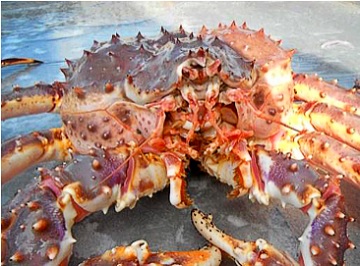
Alaska crab fishery collapse seen as warning about Bering Sea transformation
Less than five years ago, prospects appeared bright for Bering Sea crab fishers. Stocks were abundant and healthy, federal biologists said, and prices were near all-time highs. Now two dominant crab harvests have been canceled for lack of fish. For the first time, the Alaska Department of Fish and Game in October canceled the 2022-2023 harvest of Bering Sea snow crab, and it also announced the second consecutive year of closure for another important harvest, that of Bristol Bay red king crab. What has happened between then and now? A sustained marine heat wave that prevented ice formation in the Bering Sea for two winters, thus vastly altering ocean conditions and fish health. “We lost billions of snow crab in a matter of months,”,,, >click to read< 18:54
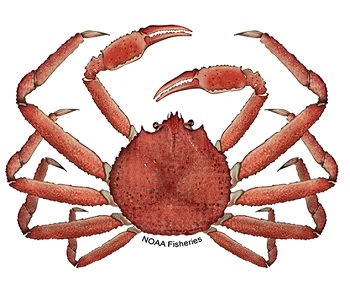
Did climate change really kill billions of snow crabs in Alaska?
In October 2022, the National Oceanic and Atmospheric Administration (NOAA) announced that the lucrative snow crab fishery in the Bering Sea would close for the first time, following a population decline of 80% between 2018 and 2022. While fisheries managers and biologists say climate change is to blame for the species’ retreat, some fishers and crab experts suggest that trawling bycatch and other fishing activity may have played a role in the snow crab’s decline. The fishery’s closure has amplified a chorus of concerns about Alaska’s trawling industry and the knowledge gaps around its potential impact on fisheries. The disappearance of billions snow crabs from the Bering Sea has captivated the world’s attention since Alaska shut down the fishery for the first time in October 2022. But where exactly did these snow crabs go? And what caused them to vanish so quickly? >click to read< 08:02
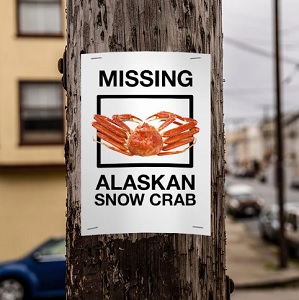
Why Did 11 Billion Alaskan Snow Crabs Suddenly Disappear?
Earlier this month, Alaska announced that it had canceled the entire snow crab harvest for the year. The news heralded a catastrophic population collapse for the animals, in which nine out of ten died out between 2018 to 2021. It’s a terrible development for those who make a living harvesting the crabs in a region of the world that’s warming unusually fast because of its proximity to the North Pole. (Alaska officials also canceled the fall Bristol Bay red king crab harvest for a second year in a row.) This isn’t a small industry; Alaska’s crab fishing is worth more than $200 million a year. The sudden shutdown has left the state, well, shell-shocked. >click to read< 12:04
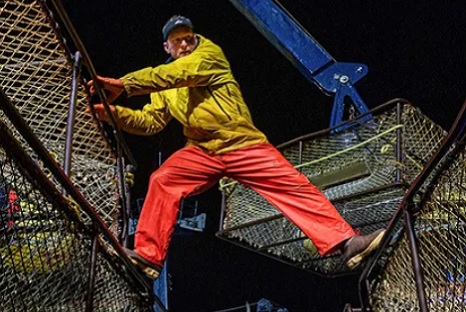
NMFS survey delivers more bad news to Bering Sea crab fleet
A Bering Sea survey by federal scientists contains more bad news for Alaska, Washington and Oregon-based crabbers hoping for an upturn in upcoming harvests that last year fell to rock-bottom levels. The federal survey results for Bristol Bay king crab are bleak and crabbers have been warned that for a second consecutive year there may not be a fall harvest, according to Jamie Goen, executive director of the Alaska Bering Sea Crabbers. “We have got an emergency,” Goen said. “I’m trying to get Congress to act to help.” The National Marine Fisheries Service survey does offer hope for improved harvests three to five years from now, as young snow crabs grow to adult size. >click to read< 12:20
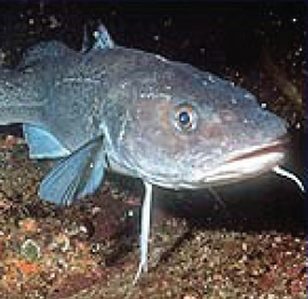
Fewer Pollock, cod found in southern Bering Sea survey
Formal results of this year’s NOAA trawl survey of the southern Bering Sea won’t be announced until mid-September, but preliminary data shows a decided warming trend and the presence of fewer Alaska Pollock and Pacific cod than anticipated. “It appears that conditions are such now that we are moving into a warming phase and there is not clear evidence that we will move back into a cold phase,” said Lyle Britt, a research fisheries biologist with NOAA’s Alaska Fisheries Science Center in Seattle who participated in this year’s survey. >click to read<15:41
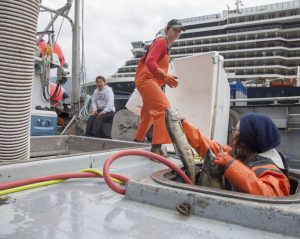
The mysterious case of Alaska’s strange sockeye salmon returns this year
There’s something unusual going on with the sockeye salmon runs returning to Alaska this year. In some places — like Bristol Bay — the runs are strong. In others, like the Copper River or the Kenai River they’re unexpectedly weak. In some places, there are sockeye that are unusually small. In others, sockeye of a certain age appear to be missing entirely. It’s a mystery. In Southeast Alaska, one of the first Fish and Game staffers to notice an unusual trend was Iris Frank, a regional data coordinator and fisheries technician. Frank’s lab is on the first floor of Fish and Game’s Douglas Island office that looks like it hasn’t changed much in the 32 years since she got there. >click to read<18:06
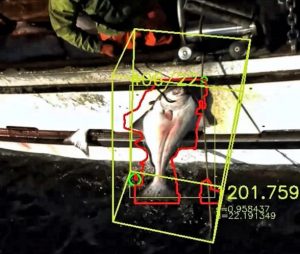
Developing Machine Vision to Collect More Timely Fisheries Data
Government scientists, academia, and fishermen are working together to develop innovative monitoring tools to identify and measure fish from digital images. This technology could revolutionize the way fisheries data are collected. Machine vision technology advances electronic monitoring systems on fishing vessels, which use cameras to collect video of commercial catches. With this technology, scientists are able to automate image analysis at sea eliminating manual data processing on land, and providing quicker access to data to make management decisions. >click to read<09:15
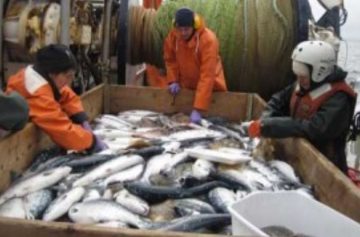
Money fish rule
Once more trawlers in the Bering Sea have gone to court in an effort to stop the National Marine Fisheries Service (NMFS) from billing them for the costs of managing Chinook salmon in the Bering Sea.,,, U.S. Commerce Department “cost recovery regulations, as applied to catcher-processor sector participants violate the (Magnuson-Stevens Act) MSA and (Administrative Procedures Act) APA, are arbitrary, capricious, an abuse of discretion and not in accordance with law, and are in excess of statutory jurisdiction, authority or limitations and short of statutory right,” the trawlers charged in a lawsuit filed Tuesday in the U.S. District Court for Alaska. click here to read the story 08:25

Kodiak officials prepare for ‘disaster’: An 80 percent decline in Gulf cod catches in 2018
Kodiak officials already are drafting a disaster declaration due to the crash of cod stocks throughout the Gulf of Alaska. The shortage will hurt many other coastal communities as well. Gulf cod catches for 2018 will drop by 80 percent to just under 29 million pounds in federally managed waters, compared to a harvest this year of nearly 142 million pounds. The crash is expected to continue into 2020 or 2021. Cod catches in the Bering Sea also will decline by 15 percent to 414 million pounds. In all, Alaska produces 12 percent of global cod fish. click here to read the story 09:12
What the fish in Alaska’s oceans are eating — and what that can tell us
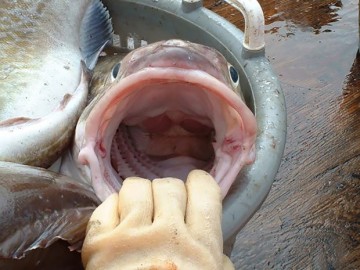 Ever wonder what eats the salmon that don’t make it back to Bristol Bay? Or what fish are cannibals? A new database released online in late March by the National Marine Fisheries Service offers a glimpse into fish diets, based on decades of study of their stomach contents. It ranges from commonly known species like halibut, Pacific cod and pollock, to lesser-known fish, like sculpins, snailfish and even alligatorfish. Herring and salmon also make an appearance, although they aren’t the focus. Kerim Aydin, a supervisory fisheries biologist at the in Seattle, said the database includes collections that have been in the works since the 1980s, and is largely focused on commercial groundfish species. Read the rest here 10:55
Ever wonder what eats the salmon that don’t make it back to Bristol Bay? Or what fish are cannibals? A new database released online in late March by the National Marine Fisheries Service offers a glimpse into fish diets, based on decades of study of their stomach contents. It ranges from commonly known species like halibut, Pacific cod and pollock, to lesser-known fish, like sculpins, snailfish and even alligatorfish. Herring and salmon also make an appearance, although they aren’t the focus. Kerim Aydin, a supervisory fisheries biologist at the in Seattle, said the database includes collections that have been in the works since the 1980s, and is largely focused on commercial groundfish species. Read the rest here 10:55
NPFMC Bering Sea fishing decision based on science, not bias
 This week, the North Pacific Fisheries Management Council (NFPMC) ruled that it will not be placing a limit on trawl fishing in the Bering Sea’s Pribilof and Zhemchug canyons, despite claims by various NGOs that the practice places vulnerable coral in danger there. Greenpeace, taking the lead on the NGO protests of the NFPMC’s decision, suggested that the council was catering to fishing industry special interests; however,,, Read the rest here 13:39
This week, the North Pacific Fisheries Management Council (NFPMC) ruled that it will not be placing a limit on trawl fishing in the Bering Sea’s Pribilof and Zhemchug canyons, despite claims by various NGOs that the practice places vulnerable coral in danger there. Greenpeace, taking the lead on the NGO protests of the NFPMC’s decision, suggested that the council was catering to fishing industry special interests; however,,, Read the rest here 13:39
Juneau wants more AK researchers to be based in AK
 Researchers at the Alaska Fisheries Science Center are tops at the work they do – the Center is the research arm of NOAA Fisheries. Their science forms the basis for setting Alaska fish quotas, running observer programs, tightening bycatch limits, to name a few. But … the Alaska Fisheries Science Center is located in Seattle. wants bring those science jobs closer to the resources they study. Listen and read the rest here 21:21
Researchers at the Alaska Fisheries Science Center are tops at the work they do – the Center is the research arm of NOAA Fisheries. Their science forms the basis for setting Alaska fish quotas, running observer programs, tightening bycatch limits, to name a few. But … the Alaska Fisheries Science Center is located in Seattle. wants bring those science jobs closer to the resources they study. Listen and read the rest here 21:21

































